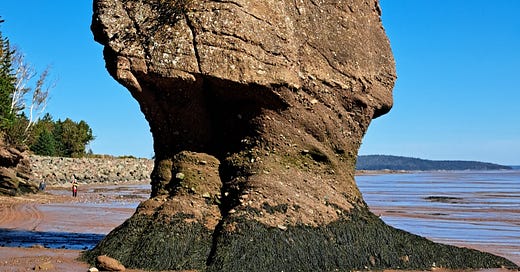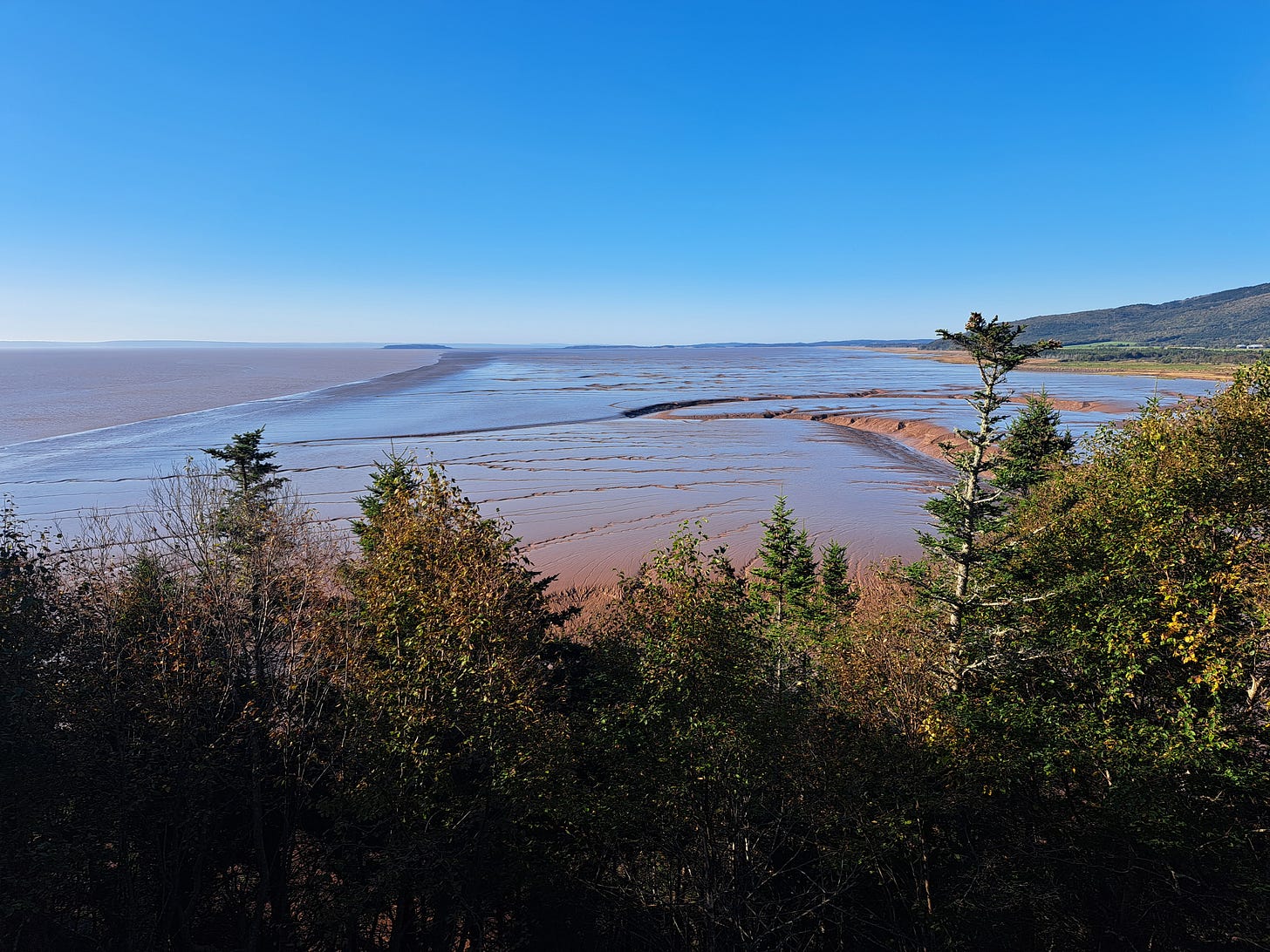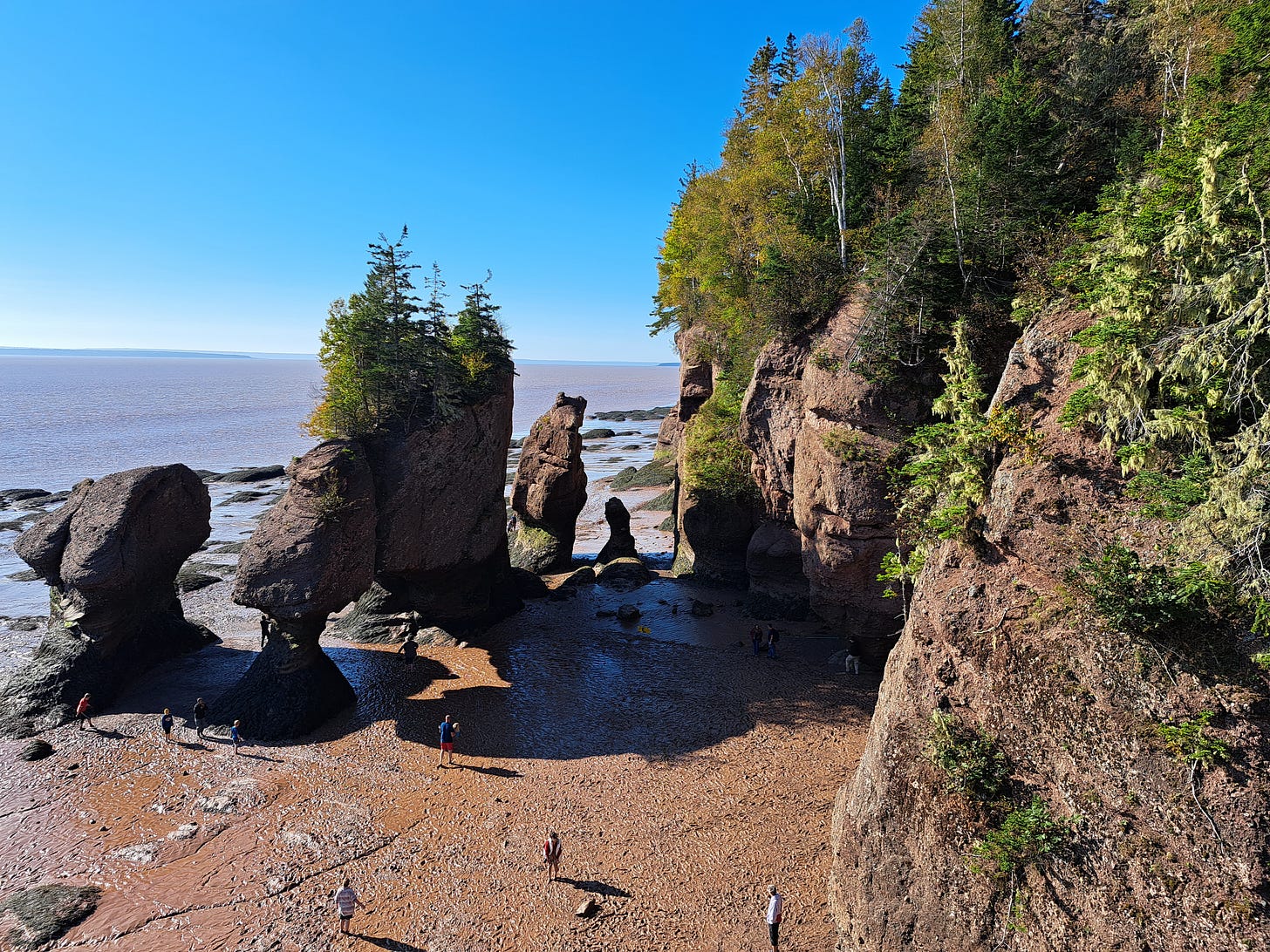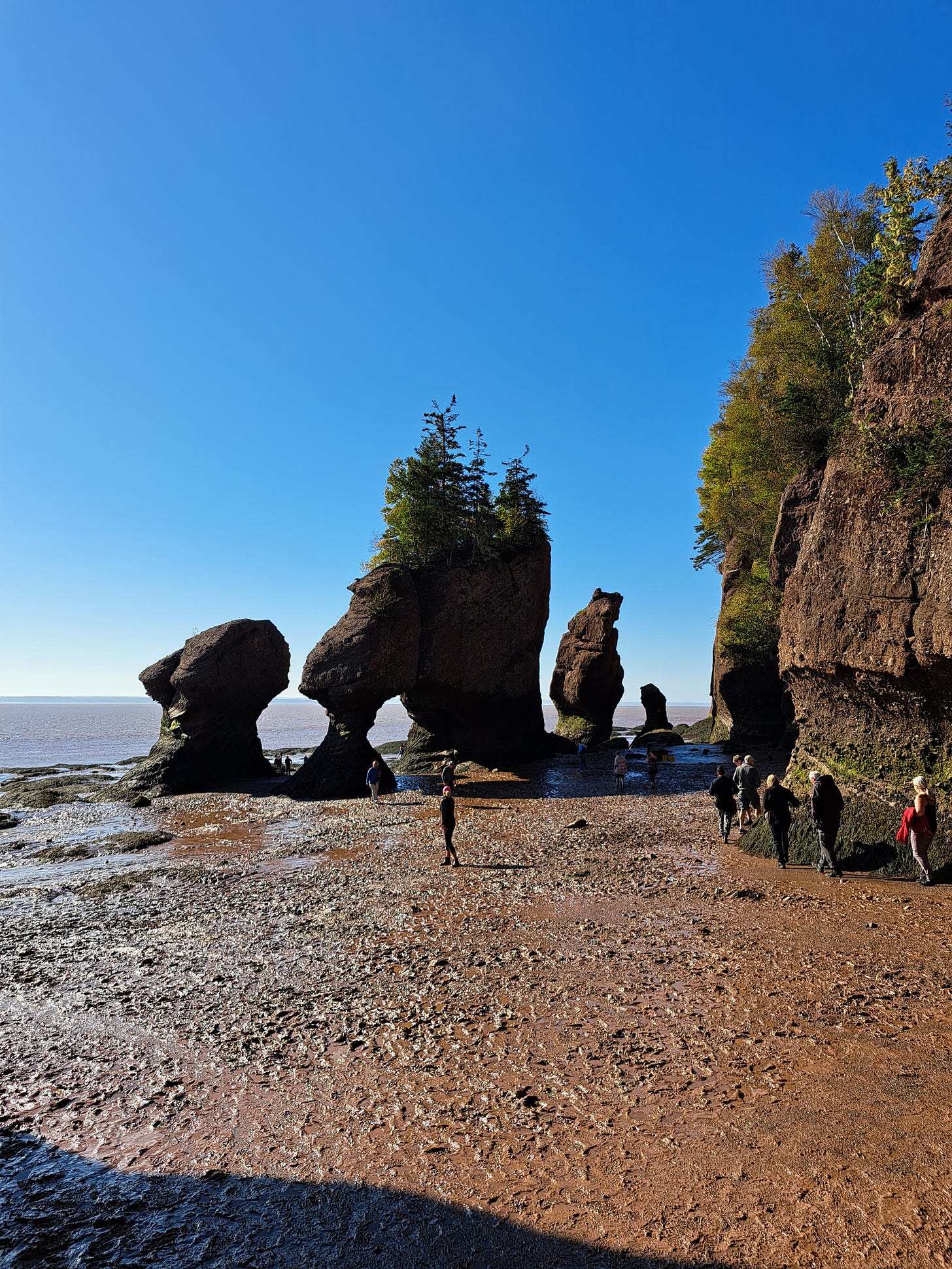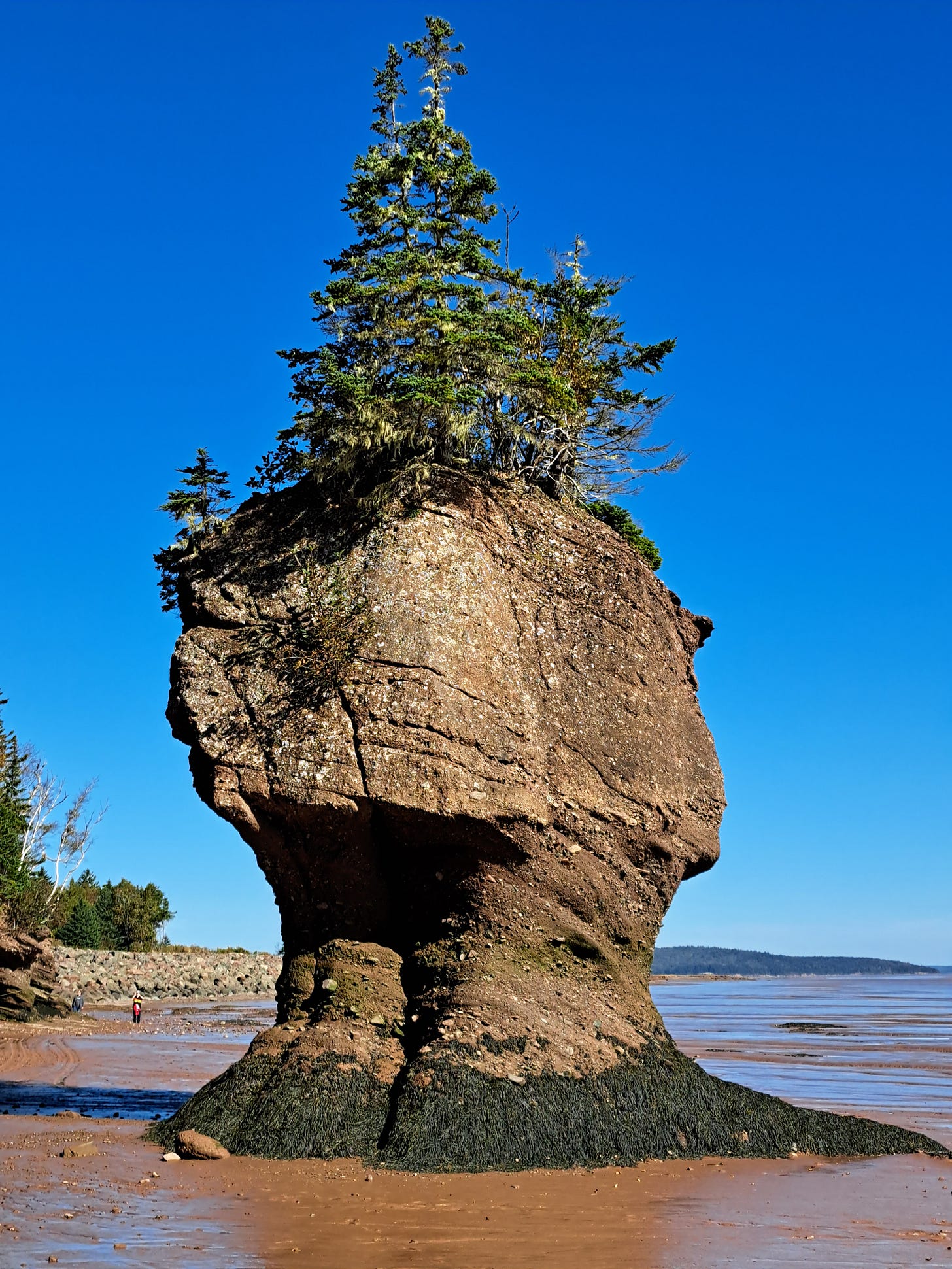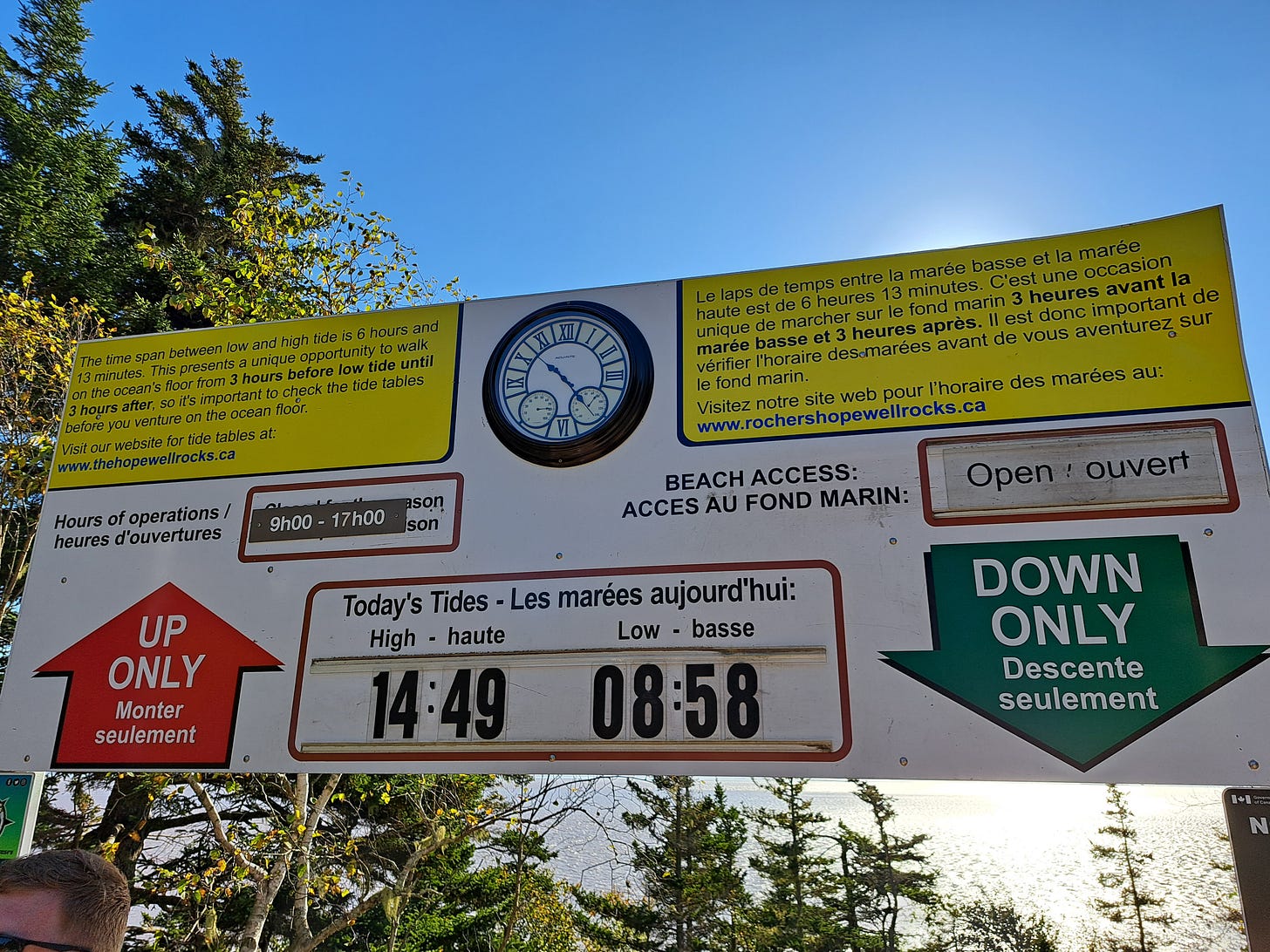[Welcome to the new subscribers that have joined in the last few days while I have been travelling across eastern Canada. I hadn’t quite realised what an enormous country Canada is, and… I shall never complain about trains in the UK again. My overnight train from Quebec to Moncton arrived 5 hours late, and the following day the train on to Halifax (NS) from Moncton was delayed by 6 hours. So, I had extra time to kill, and went to the Bay of Fundy, a geographical must-see.
Normal service will resume later next week.]
From Microsoft Bing AI, (which is mostly based on Wikipedia, it seems…. ‘The Bay of Fundy is a bay located between the Canadian provinces of New Brunswick and Nova Scotia, with a small portion touching the U.S. state of Maine. It is an arm of the Gulf of Maine and has the highest tidal range in the world. The name is likely a corruption of the French word fendu, meaning 'split’.
The bay is home to several rivers, including Big Salmon, Magaguadavic, Memramcook, Petitcodiac, Quiddy, Saint John, St. Croix, Upper Salmon, Annapolis, Avon, Cornwallis, Farrells, Salmon, Shubenacadie and Kennetcook. The tidal range in the Bay of Fundy is about 16 metres, which is much higher than the average tidal range worldwide of only one metre. The tides are semidiurnal and have two highs and two lows each day. Because of tidal resonance in the funnel-shaped bay, the tides that flow through the channel are very powerful. In one 12-hour tidal cycle, about 100 billion tonnes of water flows in and out of the bay.’
Hopewell Rocks, New Brunswick, is the best place to visit I was told. Here are some classic photos of the Bay, and of the ‘flowerpot’ rocks – so called stacks because they have trees on their tops. At low tide you can walk down many steps to the ‘sea-floor’ where it is extremely muddy, and slippery. Don’t wear your best trainers – they will be ruined (despite the helpful water hose pipe back at the top).
Photo 1. The view looking south west down the Bay. Note the ‘chocolate’ nature of the silt deposits – so dense that molluscs cannot exist (though fish can)
Photo 2. Aerial view of some ‘Flowerpot rocks’
Photo 3 and 4. Ground view.
Photo 5. The warnings before you descend the steps - bilingual of course.

